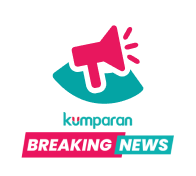Tentang KamiPedoman Media SiberKetentuan & Kebijakan PrivasiPanduan KomunitasPeringkat PenulisCara Menulis di kumparanInformasi Kerja SamaBantuanIklanKarir
2025 © PT Dynamo Media Network
Version 1.93.2
Konten dari Pengguna
Voyager and Me: A Journey Beyond Time
1 Desember 2024 14:22 WIB
·
waktu baca 5 menitTulisan dari IP Rangga tidak mewakili pandangan dari redaksi kumparan

ADVERTISEMENT
I often think about the Voyager spacecraft—probably more than most. It’s not just because it’s the farthest human-made object from Earth or because of its famous Golden Record. No, there’s something more personal about it for me. You see, Voyager One was launched in 1977, the same year I was born. As I grew up, it was already well on its way, exploring the outer reaches of our solar system. Now, decades later, both of us are still here—Voyager, drifting farther from Earth each day, and me, reflecting on what it all means.
ADVERTISEMENT
Recently, I also found myself thinking about the asteroid belt between Mars and Jupiter. People imagine it like Saturn’s rings—a dense, swirling mass of rocks and debris—but it’s nothing like that. The asteroid belt is actually a wide, sparse region of space, so spread out that a spacecraft like Voyager could pass through it without ever colliding with an asteroid.
I remember calculating how long it would take a spacecraft like Voyager to cross that belt—about 190 days, give or take. It moves at a speed of 17 kilometres per second, coasting silently through the emptiness. You see, Voyager doesn’t rely on any engines to travel anymore; it’s been gliding freely in space for decades, powered only by its fading radioisotope thermoelectric generators (RTGs). There’s no stopping it, no turning back, just endless momentum.
But here’s the thing: if Voyager had used Mars’ gravity as a slingshot, it could have picked up some extra speed. Not enough to double its velocity, but enough to cut a bit of time off its journey. I mean, imagine a spacecraft getting a little push from the red planet, speeding it up just enough to cross the asteroid belt in maybe 160 days. I’ve always wondered what that would feel like—using the pull of another planet to reach into the unknown.
ADVERTISEMENT
Voyager is out there, still moving. Still exploring. And it got me thinking: it’s not just some piece of machinery floating in space. It’s our representative, carrying with it a little piece of Earth—a message, a hope, embedded in the Golden Record. But the longer I reflect on Voyager’s journey, the more I start to realise something strange: we’ve always prepared ourselves for the idea of meeting aliens, some strange, unimaginable beings from distant worlds.
What if, instead of aliens, we found… other humans? Beings just like us, but from another planet? I don’t think we’re ready for that.
You see, we’ve spent decades preparing for an encounter with something utterly different—intelligent life that doesn’t look or think like us. But what if we came face-to-face with ourselves? Other human beings, almost identical, living out there on a planet we’ve never known existed. That thought—it terrifies me more than meeting any alien ever could.
ADVERTISEMENT
Think about it: we already struggle to coexist with each other here on Earth. Nations clash, cultures collide, and we can’t seem to find a way to live together in peace. Now imagine meeting a mirror image of ourselves, but from another world. They would challenge everything we believe—our history, our uniqueness, even our understanding of what it means to be human. How would we react? Would we see them as brothers and sisters, or would we fear them, just as we often fear what we don’t understand?
Maybe that’s why the universe has kept us in the dark. Maybe it knows we’re not ready—not yet, anyway. We’re still learning what it means to be us. The universe, with all its mysteries and wonders, might be waiting for us to grow up a bit before it shows us what lies beyond.
ADVERTISEMENT
I think about Voyager again. It’s been travelling for over 45 years now, powered by its slowly decaying plutonium core. Poor thing. It’ll eventually go dark, unable to power its instruments or send messages back to us. Even if it drifts close to a star—there’s no way for it to "recharge”. But Voyager will keep moving, long after it’s silent, long after we’re gone. It’ll keep drifting through space, carrying its Golden Record—our message to whoever, or whatever, might find it.
I wonder sometimes: by the time someone finds Voyager, will we even exist anymore? Earth might be a distant memory, a place long gone, transformed by time. Or maybe, we’ll have moved beyond, no longer tied to this single rock we call home. Whoever—or whatever—finds that record might look at it as a relic of a species that once dreamed of reaching the stars.
ADVERTISEMENT
But here’s the thing: Voyager’s mission wasn’t just to explore the universe. It was to show that we tried. We reached out, knowing full well we might never hear back. That’s what makes it meaningful—not the discovery itself, but the act of sending something into the unknown, of daring to say, “We’re here.”
The Golden Record carries our message—a hope for connection. It may never reach its intended audience. But in a way, it’s already succeeded. It’s a reminder that, despite our differences, despite our fears, we are curious, we are explorers, and we are united in our desire to understand the universe around us.
And maybe, just maybe, that’s enough. The universe will reveal its secrets when we’re ready. Until then, we’ll keep sending our little messengers into the void, hoping that one day, someone—or something—will listen.
ADVERTISEMENT

